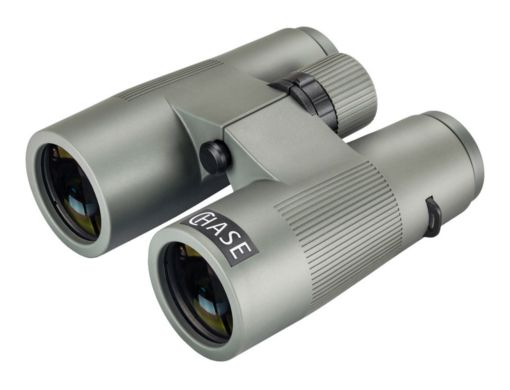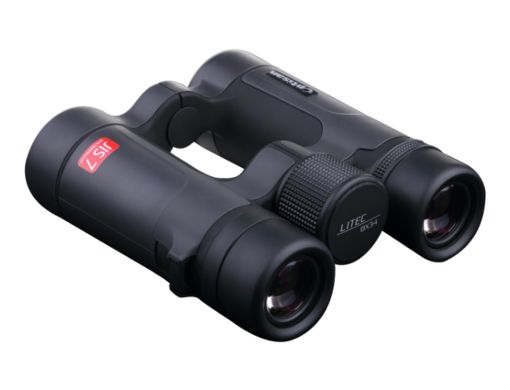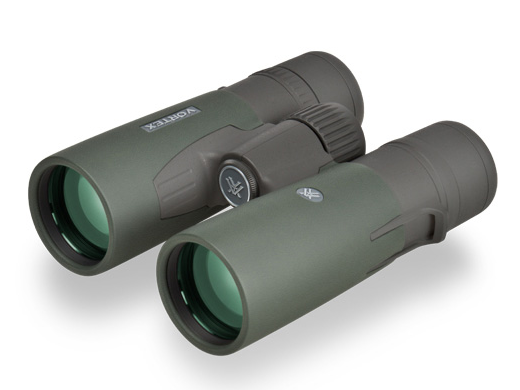All The Basics You Need To Know
by Jonny Anderson
In this article, Jonny an experienced bird watcher and outdoor enthusiast, shares his knowledge on binoculars.
Binoculars are two side-by-side telescopes that magnify a distant image – but understanding more about how they work and what spec suits your requirements will save hassle and, more importantly, money. Here’s the basic information you need to choose the right pair.
HOW DO THEY WORK?
Binoculars contain lenses. The first lens catches the light and bends it through a second magnifying lens. Bending light creates an upside-down image so the image is then shone through a prism to correct its orientation.
DECIPHERING THE NUMBERS.
Binoculars are graded using two numbers. Let’s use a pair of standard 7×35 binoculars as an example. The first number is 7. This is the magnification power – so these binoculars will bring the object seven times closer. The second number is 35. It refers to the size of the objective lens in millimeters. The size indicates how much light is let through. A bright image requires lots of light.
IS MORE MAGNIFICATION BETTER?
Sometimes. It depends what you’re using binoculars for. More magnification means the image appears closer, but it means a duller image and a reduced range of vision. A high magnification also leads to ‘effect motion’ – a shaky image caused by your hands or the wind. It means all you can spot is a blur. If you have a tripod and intend to stay still, then higher magnification can work well, but if you’re moving around then it’s often best to stick with something lower than 10x. In terms of size, 7x magnification is low to mid-range, and a 35mm objective lens is mid-range.
WHAT ABOUT EXIT PUPIL?
Hold your binoculars up to the light. See the tiny center circles? Those are the exit pupils. If you want to find out its exact measurement take your objective lens number and divide it by the magnification. So, 35 / 7 = 5mm exit pupil. It’s important because light passes through this gap and into your eyes, and more light means a brighter image. Does this mean you should just choose binoculars with a large exit pupil size? Well, that depends on light levels. In bright daylight, your pupils are approximately 2-4mm, but at dusk, they’re much bigger at around 5-7mm. Our 7×35 example has 5mm exit pupil size, so they’re good in daylight, but in low light with a pupil size of 6mm or more, there might not be enough light to get a bright image. If you’re frequently viewing in lower light conditions a bigger exit pupil size is certainly useful.
WHAT ABOUT WATERPROOFING AND ARGON PURGING?
Waterproofing is essential because rain does as much damage as a soaking in the river. Look for a fully waterproof pair that’s O-ring sealed. Water destroys binoculars fast, first distorting the image and then rusting out the components. Argon or nitrogen-filled binoculars cost more, but gas pumped into the delicate inner workings stops them fogging up on misty and chilly days.
WHAT’S BEST – PORRO OR ROOF PRISM?
Choosing Porro or Roof Prisms doesn’t make a great deal of difference, it just refers to how the light is channeled to your eyes. Roof Prism binoculars are straight-form, whilst Porros are staggered. Roof Prisms are more popular these days and they’re usually more compact, but Porros are traditional and often give better light transmission – plus they are usually cheaper!
DO I NEED LENS COATING?
Lens coating is important because it helps prevent scratches and improves light transmission. As light travels through binoculars it bounces and fades, but a good lens coating helps keep light levels up and reduces internal reflections to provide a brighter, cleaner image. Fully multi-coated lenses are the best and make a big difference.
FIELD OF VIEW – DOES IT MATTER?
Wide-angle binoculars over 65 degrees ‘apparent field of view’ mean you see more area through the binoculars at one time, but it won’t be as magnified. If you want to scan an area then a wide field of view is useful, but for more focused work go for the higher magnification and less field of view.
WHAT ABOUT THE DIOPTRIC MEASUREMENT?
This is an important measurement that accommodates the shape of your face. You adjust binoculars by moving the hinge and settling the eyepieces. Wider faces need more adjustment. The dioptric measurement compensates for the differences in the strength of your eyes.
WHICH BINOCULARS SHOULD I BUY?
Think about the field of view you need, and whether you’d prefer a high magnification over a brighter image. Then choose the best pair you can afford and learn how to adjust them properly to get the most from their spec. You don’t need to spend a fortune if you choose binoculars that suit your activities and you can handle them with confidence.



You can find more helpful advice from Jonny by clicking HERE.
And want to view our range of Binoculars, click HERE.














